What is a Community Title Scheme?

More and more new housing estates are set up as community, precinct or neighbourhood associations.The large developments in Sydney’s outer suburbs spring to mind.
They typically offer a mix of strata titled apartment buildings, townhouses and shopping centres with shared promenades and parklands. A great recent example is Breakfast Point in Sydney.
The developers of these locations typically market the lifestyles that come with buying a property in their estates. They offer bicycle tracks through parks, swimming pools and playgrounds.
Please note: this article does not reflect the NSW Strata Schemes Management Act 2015 which came into effect on 30 November 2016. It is based on the NSW Strata Schemes Management Act 1996. Please use this article for information only, and check with your strata manager to ensure you comply with the most up-to-date legislation and requirements.
Community Title Management
Community Title Management involves the management of property within these gated estates, which typically consists of various strata title schemes and shared infrastructure, such as roads and various facilities. Another way of describing it, is that they are a subdivision of land with shared property, not dissimilar to strata title. Please note that there are some technical differences and variations from state to state.
Community Title Schemes typically maintain their own roads, parks and gardens, and garbage collection. This explains the popularity of this model with many councils. Residents still pay council levies, however only receive limited services from their council, as most are funded by themselves. You could call them “mini councils”.
Association and Association Property
The Community Land Management Act 1989 and the Community Land Development Act 1973 are the two acts that detail how community schemes should be run. The NSW Department of Fair Trading is currently reviewing these Acts.
The joined, collective ownership model is a corporation, named the ‘association’ and the communal owned property, such as roads, promenades and parklands are called ‘association property’.
Community, Precinct and Neighbourhood Associations
In New South Wales, there are three types of associations, the previously mentioned community, precinct or neighbourhood associations. To give you an idea of the popularity of these associations, in 2014 there were over 700 community schemes, approximately 30 precinct schemes and over 1,400 neighbourhood schemes. This pales in comparison to the approximately 75,000 strata schemes in NSW, however don’t forget that some of these developments are in fact suburbs. They can be vast!
A Community Plan is typically used when a developer wants to build a large scale development consisting of various release stages with a multi-tiered management structure. It divides the land in Association Property and lots for development. A Community Association can consist of Precincts, Neighbourhoods and Strata Schemes.
Precincts are pretty rare, mainly because they are a combination of Community Plans and Neighbourhood Plans albeit with certain restrictions. Let me spare you the details.
Finally, Neighbourhood Associations with over 1,400 registrations in NSW is the most popular form and can be used in tiered, stand-alone and staged developments. It lets you subdivide lots in a Community Plan, a Precinct plan or conventional ‘strata’ lots.
Still confused? I cannot blame you. Effectively, they all offer developers ways to gradually develop a parcel of land without restrictions without really affecting the individual lot owners.
How are these Community Schemes managed?
By now you would have gathered that these type of associations are very complex to manage. They usually consist of a mix of residential, commercial and retail lots often with conflicting interests. As in strata, the schemes are managed through resolutions tabled at meetings. There is the community scheme committee for more day-to-day issues and general meetings attended by all owners for larger topics.
What about by-laws?
The by-laws of your strata titled building apply, as well as the by-laws of the community scheme. This means you might have to apply for permission of both committees to make changes.
Management Statements
All by-laws in a community scheme are detailed in a so-called Management Statement, which is lodged with each plan. Due to the varying nature of these scheme you don’t get the standardised by-laws as with strata schemes.
If you are interested in reading more about these changes and associations in general, check out the website of the NSW Department of Fair Trading. They also created this handy guide.
Premium Strata offers a tailor-made solution for developers and will assist them every step of the way in getting their property registered as a NSW Strata Plan. Premium Strata offers both excellent Strata Management and Building Management services. Call us today for an obligation free chat! We are happy to answer any questions you may have.
We hope you found this little guide useful. Please keep your eyes open for future posts, as we will continue to work towards making the somewhat complex world of strata management just that little bit easier to understand.
Leave us a Review
If you are a client of Premium Strata, we would greatly appreciate if you could leave us a google review of your positive experience about our team and work. If you have any feedback or require any assistance, please do not hesitate to contact us.








